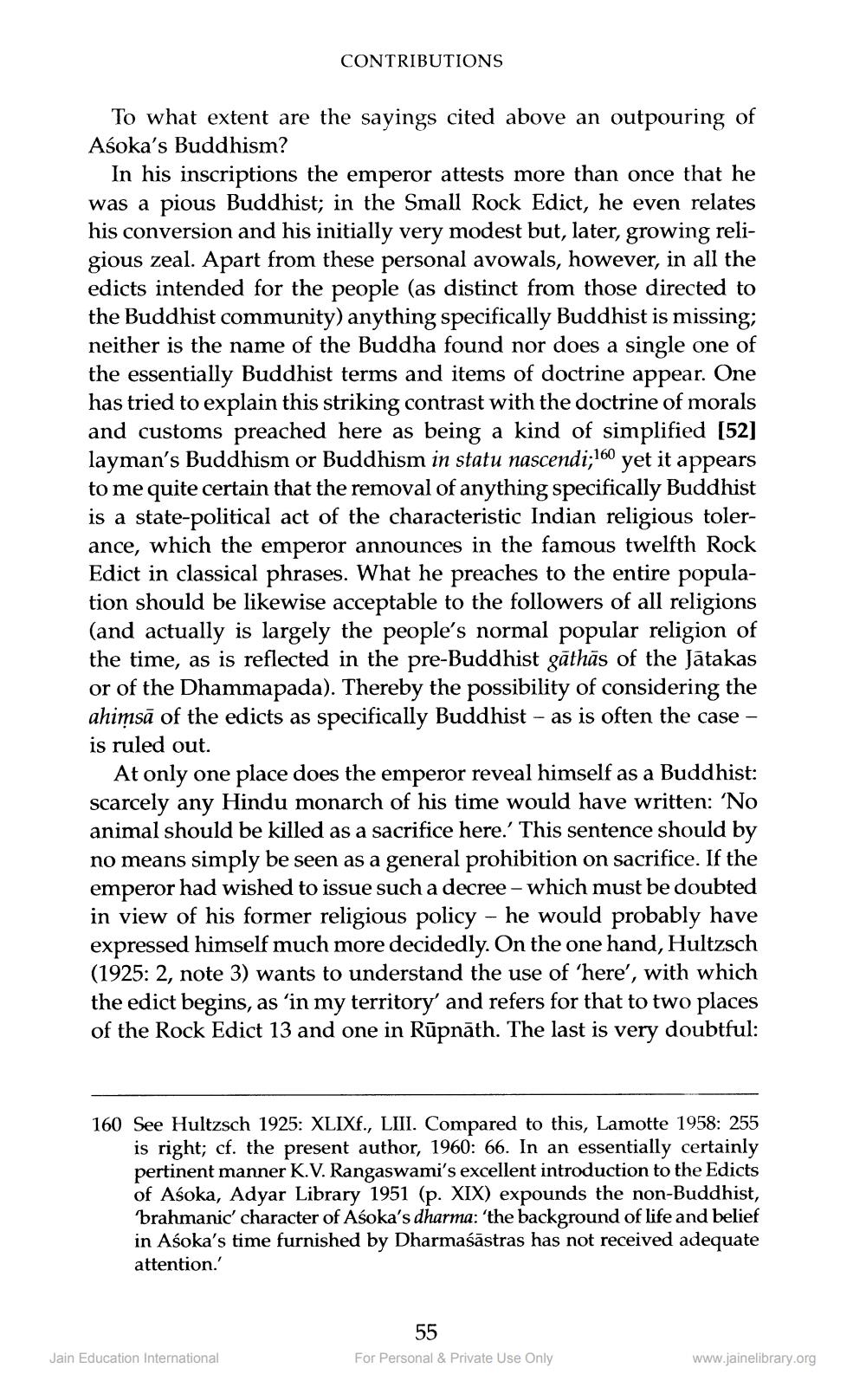________________
CONTRIBUTIONS
To what extent are the sayings cited above an outpouring of Aśoka's Buddhism?
In his inscriptions the emperor attests more than once that he was a pious Buddhist; in the Small Rock Edict, he even relates his conversion and his initially very modest but, later, growing religious zeal. Apart from these personal avowals, however, in all the edicts intended for the people (as distinct from those directed to the Buddhist community) anything specifically Buddhist is missing; neither is the name of the Buddha found nor does a single one of the essentially Buddhist terms and items of doctrine appear. One has tried to explain this striking contrast with the doctrine of morals and customs preached here as being a kind of simplified [52] layman's Buddhism or Buddhism in statu nascendi;160 yet it appears to me quite certain that the removal of anything specifically Buddhist is a state-political act of the characteristic Indian religious tolerance, which the emperor announces in the famous twelfth Rock Edict in classical phrases. What he preaches to the entire population should be likewise acceptable to the followers of all religions (and actually is largely the people's normal popular religion of the time, as is reflected in the pre-Buddhist gāthās of the Jātakas or of the Dhammapada). Thereby the possibility of considering the ahimsa of the edicts as specifically Buddhist - as is often the case - is ruled out.
At only one place does the emperor reveal himself as a Buddhist: scarcely any Hindu monarch of his time would have written: 'No animal should be killed as a sacrifice here.' This sentence should by no means simply be seen as a general prohibition on sacrifice. If the emperor had wished to issue such a decree - which must be doubted in view of his former religious policy - he would probably have expressed himself much more decidedly. On the one hand, Hultzsch (1925: 2, note 3) wants to understand the use of 'here', with which the edict begins, as 'in my territory' and refers for that to two places of the Rock Edict 13 and one in Rūpnāth. The last is very doubtful:
160 See Hultzsch 1925: XLIXf., LIII. Compared to this, Lamotte 1958: 255 is right; cf. the present author, 1960: 66. In an essentially certainly pertinent manner K.V. Rangaswami's excellent introduction to the Edicts of Asoka, Adyar Library 1951 (p. XIX) expounds the non-Buddhist, 'brahmanic' character of Aśoka's dharma: 'the background of life and belief in Aśoka's time furnished by Dharmaśāstras has not received adequate attention.'
Jain Education International
55
For Personal & Private Use Only
www.jainelibrary.org




